Child sexual exploitation: How the system failed
- Published
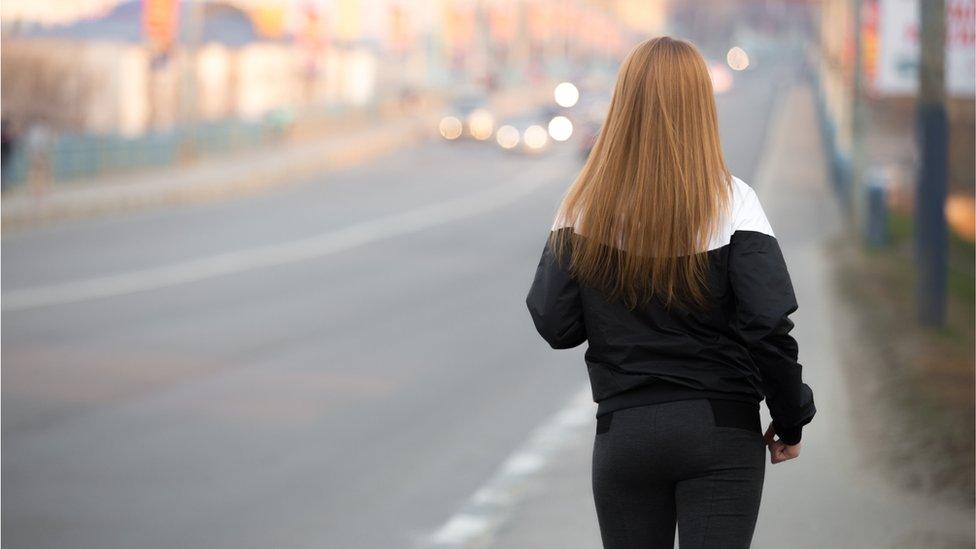
Grooming, rape, trafficking, or the many other ways children are being sexually abused, the subject of child sexual exploitation - or CSE as it is known by professionals in the field - is in the headlines with depressing regularity. Telford is currently in the spotlight - but is by no means the first place and will not be the last.
There were so many opportunities - in Rotherham, in Rochdale, in Oxford - to step in and help. No-one did. The exploitation continued.
Not only did the cycle of abuse grind on, but the message given to the victims must have been that "we don't care about you".
One 13-year-old girl, "with disrupted clothing", was found by police in a house in the early hours with a group of men who had given her vodka. A neighbour had called the police after hearing the girl scream. The teenager was arrested for being drunk and disorderly. The men were not questioned.
A 12-year-old girl was found, being plied with alcohol, in a car with a 22-year-old man. He had indecent images of her on his phone. No action was taken.
Rather than being offered protection, teenagers groomed and coerced into having sex faced criminal charges of prostitution.
A major factor was the public - and professional - perception of the abused girls, who were often dismissed as troublemakers.
As the Children's Society 1995 Game's Up report, external asked: "Is it acceptable that a child abused at home is protected, whereas a child abused on the street is criminalised?"
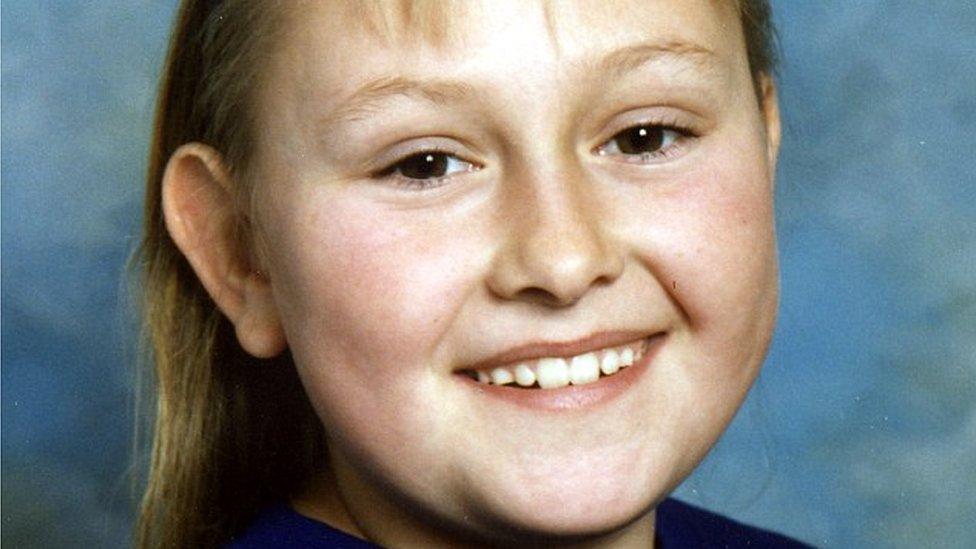
Lucy Lowe was 16 and pregnant with her second child when she was murdered
And the media unwittingly helped to obscure the scale of the abuse, referring to children as the "girlfriends" of adult men. When in 2001, Lucy Lowe was murdered in Telford - along with her mother and sister - by the 26-year-old man who had groomed and abused her, news outlets - including the BBC - described the adult killer as Lucy's "boyfriend", external.
She was 16 and pregnant with her second child by Azhar Ali Mehmood, who set fire to the Lowe family home. The infant, who had been in the house, was later found wrapped in a blanket in the garden.
In court, the prosecution barrister Adrian Redgrave QC said: "There had also been occasions when he had been, in one way or another, humiliated in front of others by things that Lucy had said or done. He was jealous and possessive."
The court heard they had a "stormy relationship and argued frequently, sometimes about her relationships with other men".
It makes for difficult reading.
At no point is a suggestion made that this was not a "relationship" and that Lucy was a victim of rape. Targeted by Mehmood aged 12 and giving birth to her first child at 14, she was legally incapable of consent.
It was later to emerge that Lucy's situation was far from unusual. Operation Chalice, launched by West Mercia Police, led to the jailing of a group of Asian men, mostly of Pakistani origin, whom police said may have targeted more than 100 girls.
"Even five years ago, people were talking about the 'lifestyle choices' these young people were making," says Adele Gladman, the Home Office researcher who reported the scale of abuse in Rotherham.
As recently as 2012, when 24-year-old Ahdel Ali was convicted of raping a 13-year-old girl and jailed for 18 years, his barrister asked the judge to be lenient because "this type of rape is not like other horrible types of rapes".
It now seems astonishing, but lawyer Tayyab Khan stood up in court and said the child "had loved" Ali, who had been "pleasant to her" and it had been "a consensual relationship". A message both damaging and dangerous.
But the language used to describe young people in abusive situations is slowly changing. A significant factor was the abolishment of the term "child prostitution" in favour of the term child sexual exploitation, first used in 2009 in a Department for Education document.
A small change, perhaps, but it shifted the focus and clarified that the children involved were victims, not perpetrators, of crimes.
According to research carried out by Barnardo's, describing victims as a "girlfriend" or "boyfriend" can make it more difficult for them to realise they are in an abusive situation.
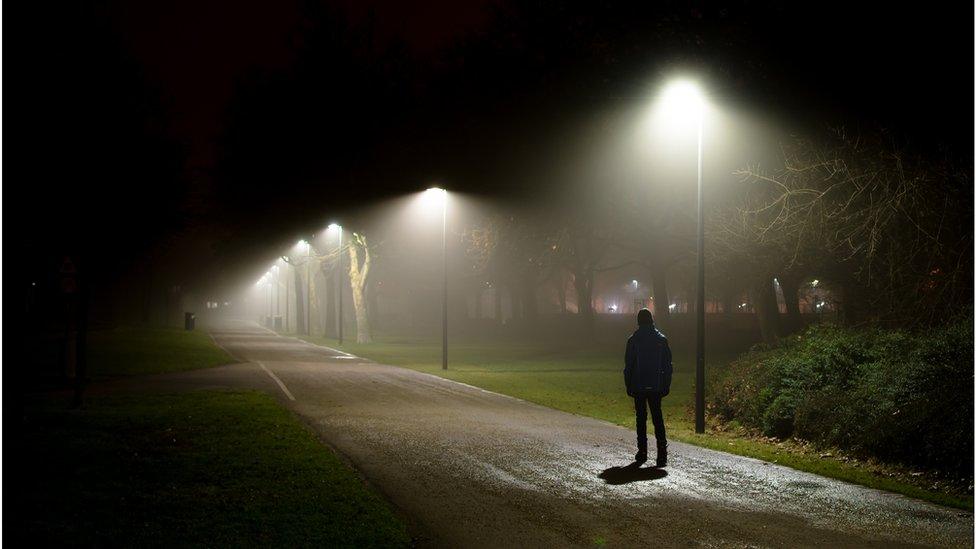
The Jay Report, external cites cases in which abusers targeted children when they knew there was a chance the victim might be especially vulnerable, such as those living in local authority residential units, and who have "a desperate need for attention and affection".
Those in local authority care are often deliberately targeted for exploitation as they may not have the same support in their lives, with adults who can spot that they are at risk.
The Barnardo's research indicates "perpetrators of this type of CSE will particularly draw on children's feelings of loneliness, their need for care, and their desire to be loved".
A girl starved of attention and kindness is more likely to believe she is in a caring relationship, leaving the perpetrator free to coerce her to have sex with friends or associates. As a result, children will often protect the perpetrator, even when they recognise their behaviour as exploitative and abusive.
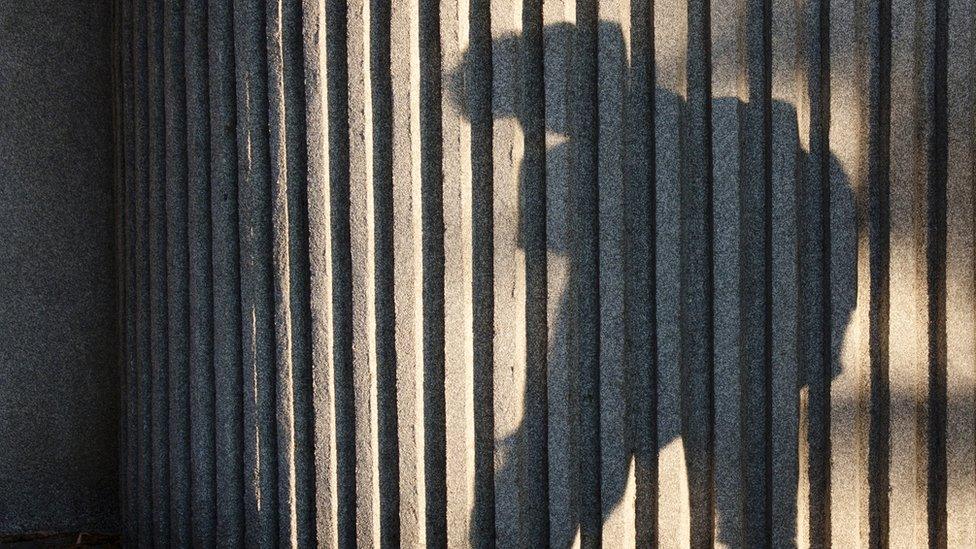
"I know he loves me. He has other girlfriends, but I'm special," was a sentiment often uttered in the investigation into what happened in Rotherham. Many victims do not want to co-operate with the criminal justice system.
A care worker, who was employed at children's homes from 2003-2007, spoke anonymously to the BBC in 2014. He said men would arrive almost "every night" to collect girls, who escaped using a range of methods and were then usually driven off in taxis.
"Children who have been abused do not blame their attacker simply because they "are struggling for love".
"But you cannot provide love in a children's unit. It's one thing that you can't provide, and as a corporate parent it's where we fail.
"And if [the abusers] are providing that, plus drugs, and alcohol and freedoms, or perceived freedoms, then we're never going to be able to keep them safe."
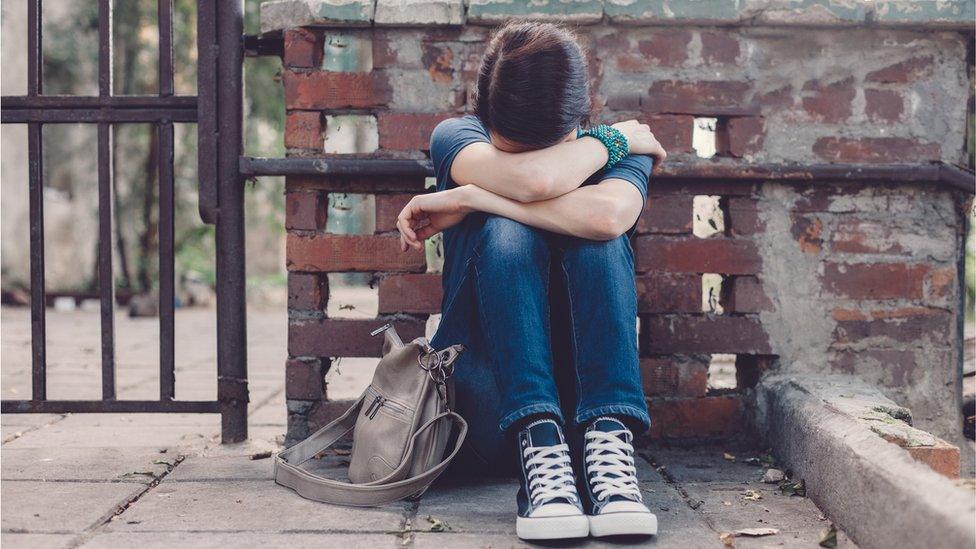
Dr Helen Beckett, director at the University of Bedfordshire centre of researching CSE says: "What is common across all forms of CSE is the rarity with which young people disclose what is happening to them.
"There are many different reasons for this - many young people don't even realise the abusive nature of what is happening. Some may even feel in some way complicit in the abuse because there has been some kind of 'reward' or receipt of something."
That can be gifts, alcohol, drugs, or affection. In some cases victims are so traumatised they use drink or drugs to cope. But they then need the means to get the drink or drugs. It's a vicious circle.
Ms Gladman says this is one area in which "nothing has changed".
"The grooming is so good, so targeted and tailored that the girls - and boys - involved don't understand they are being exploited. They don't listen to warnings. They're desperate for love and attention and it's up to the experts to recognise that, to spot who is vulnerable, and almost follow the grooming process themselves.
"We have to engage with the young people and make them feel worthwhile, give them life skills."
There is, however, a danger in thinking the only people at risk are those with difficult histories. As Ms Gladman points out: "Parents tend to believe it's kids from troubled families who are at risk.
"Any child can be vulnerable if not protected."

While some of the most high-profile cases of CSE have involved gangs of men with Pakistani heritage abusing white girls, Dr Beckett points out that there is "no typical CSE case".
"It exists across every ethnic grouping, both in terms of those perpetrating and in terms of those experiencing the abuse. Research tells us that both males and females are abused through CSE. Similarly, both males and females perpetrate the abuse.
"Whilst most of our focus historically has been on adults abusing children, we are increasingly learning about peer-on-peer abuse and the risk that young people face within their own social settings."
One example is that of Laura Wilson, a 17-year-old murdered by Ashtiaq Asghar - also 17 - in Rotherham in 2010. He stabbed her multiple times and pushed her into a canal to die.
Once again, the press described the killer as her "boyfriend" at the same time as reporting that Laura had a four-month-old daughter with Asghar's friend, and that they "treated white girls as 'sexual targets' and not like human beings".

Peter Grigg from the Children's Society says there has been a gradual change in attitudes towards the nature of exploitation, and the exposure of the abuse in Rotherham, Rochdale and other places "has certainly ensured decision-makers and the public pay attention to issues".
But how is the issue tackled?
Everybody involved in child protection agrees there is no single solution. No one agency holds the answers.
According to the Independent Inquiry into Child Sexual Abuse, external, systematic grooming and sexual abuse of children by groups of offenders in cities and towns of England and Wales is "widespread".
Adele Gladman says that over the past 12 years in which she has been working in the field, there is no geographical location where it is not a problem.
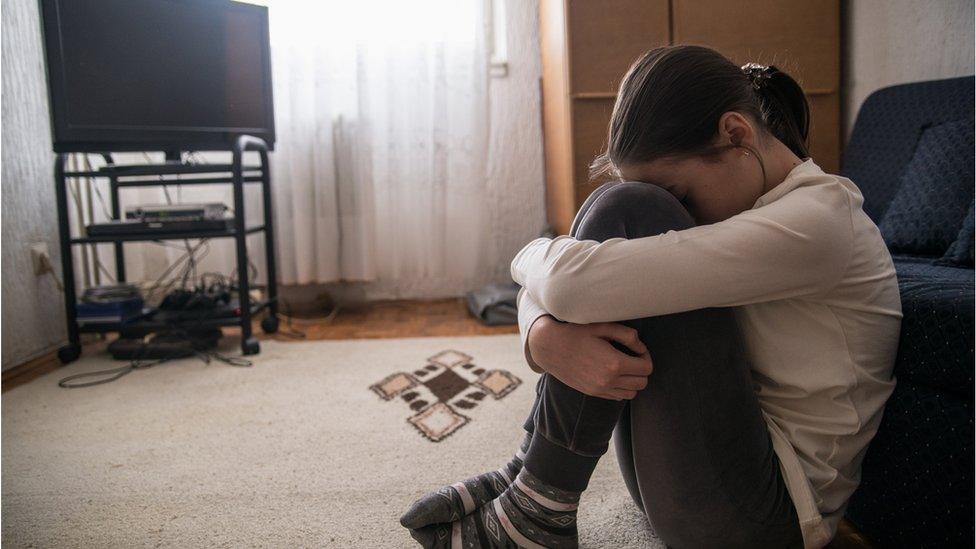
Peter Grigg says it's "very likely that many other victims exist that haven't yet felt able to speak out".
The charity's Old Enough to Know better?, external report showed that 50,000 females aged 16 and 17 experienced sexual offences against them but only around 5,000 of them were reported to the police.
The actual figures are impossible to accurately predict, says Cassi Harrison, director of the Centre of Expertise on Child Sexual Abuse.
"Due to data limitations, we are making decisions in a fog. We just can't say if more children are being sexually abused. We know we are identifying more of it, but this the tip of the iceberg.
"Reported numbers are increasing, but that could be because of increased willingness of victims to report linked to confidence they will be taken seriously, increased professional awareness of the signs of abuse and commitment to take action - or because recording has improved."


'Nobody asked any questions'
Holly - not her real name - was a victim of a group of men in Telford. She told the BBC what happened to her
"He started violently raping me, he would beat me with his belt if I didn't let him rape me. Afterwards he would try to make me feel better - or make himself feel better - by giving me money or topping up my mobile phone.
"It quickly moved on to being sold to men maybe two or three times a night. I was taken to a place I can only describe as a 'rape house' which was set up for the purpose of young girls being sold to men.
"The reason I kept going back was that they kept threatening me with burning my house down, which was a real threat in Telford as that had actually happened previously. They said they'd rape my mum and rape my sisters. They knew all about my family. There was just no escape at all.
"I was gang-raped just after I turned 16 and that was probably the worst thing that has ever happened to me. After that I tried to commit suicide. People would say to me 'was that a cry for help?' and I would say 'no - I genuinely wanted to die' because I thought that was the only way out.
"I was in cars that were stopped and searched by police with older men and it was never questioned why I was in there or who I was. My name was never asked. I just think if they had been more proactive at points like that, things could have changed earlier.
"I was also going to the doctor and the youth sexual health clinic a couple of times a week for three years and getting the morning-after pill.
"Nobody asked any questions.
"I had two abortions and again, no questions were asked as to what was going on in my life."


Identifying at-risk children is done by various organisations - charities, social workers, and police all have child welfare personnel who are out on the streets at night. Outreach sessions are held in parks and other areas popular with children.
Some children are already in contact with social services, for example those who are in local authority care. Workers use methods including regular texting, calls and cards, as well as by arranging to meet on the young person's "home ground" or at venues where they feel comfortable.
Ms Gladman, now an independent safeguarding children trainer and consultant, says legislation has been made more sophisticated in order to deal with the impact of grooming - and importantly, every local authority now has a protocol to identify and prevent CSE.
"We've become more aware of abuse and better at spotting it. In some ways, we've made huge strides. We're reaching out to parents and communities - we're engaging with what's called the 'night-time economy', taxi drivers, takeaways, off licences, places like that."
Staff at such premises have proved a valuable - if unofficial - resource when it comes to safeguarding children. Last year, taxi driver Satbir Arora raised the alarm after he drove a teenager alone to a railway station.
"Often, people let their guard down when they're out and about or in shops. Children talk to each other, and they may be overheard by the shopkeeper who can get in touch with the police about what they suspect," says Ms Gladman.
Cassi Harrison agrees public awareness is changing for the better.
"Over the past few years, we've seen an increased understanding of CSE; the complexity of the relationships between the abuser and the victim, and the way the abuser can control and manipulate the victim.
"Our ambition should be to prevent abuse before it happens, not wait until a child has been abused. There are many ways we can do this. For example, we should support young people to have expectations of healthy relationships and provide support for children when they display harmful sexual behaviour.
"It is never the responsibility of a child to keep themselves safe; the blame lies with the perpetrator.
"As adults, it's our responsibility to spot the signs and take action to safeguard children, not rely on children to tell us they are being abused."

How to report CSE
If you're worried that a child or young person is at risk or is being abused you can contact the children's social care team at their local council. You can choose not to give your details.
You can report it online, external to the Child Exploitation and Online Protection command (CEOP).
Or you can call the NSPCC 24-hour helpline on 0808 800 5000 for expert advice and support.
If a child is at immediate risk call 999, or call the police on 101 if you think a crime has been committed.
Children and young people can call Childline free on 0800 1111 where trained counsellors are available 24 hours a day, every day.